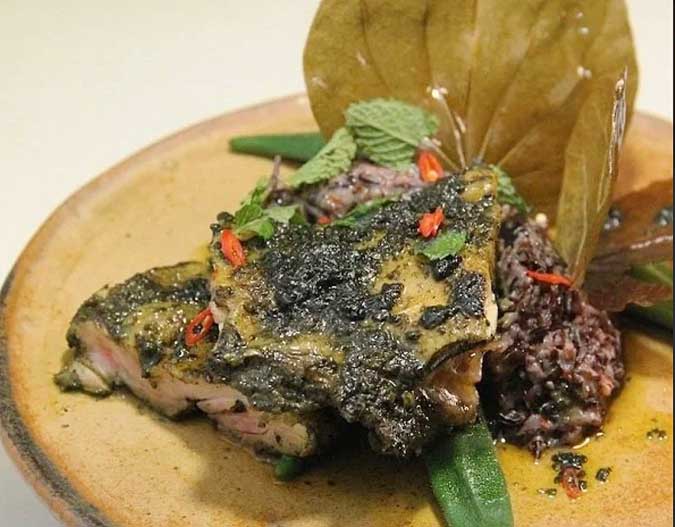IT is vital to know about something to love it — and if we’re going to begin to fall in love with Mindanao, and therefore take care of it, we should know about one of its elements: its food.
A talk from Filipino Food Month’s series of webinars, “Philippines on a Plate,” discusses the cuisine of Muslim-Filipinos (called Moros). The speaker, chef and essayist Datu Shariff Pendatun, did not skirt around the issue that these dishes can be political when he held his talk on April 22. “The food of Muslim Mindanao has the power to connect, and not divide.” Mindanao has long been a seat of conflict for multiple reasons, mostly due to issues of insurgency, separatism, feudalism, and many other -isms. “The perception that people get of Muslim Mindanao is of war and massacre — things that are negative,” said Mr. Pendatun. “I personally kind of want to disabuse everybody of the idea that Moros are just about war, and guns, and strife.”
Even the term Moro itself is loaded: the word came from colonizing Spaniards who found it difficult to christianize the Southern parts of their newly conquered lands, and identified those same natives with the Muslims they fought for dominance in the Iberian peninsula. In the 1960s and ‘70s, according to Mr. Pendatun, Muslim leaders appropriated that term “in asserting an identity, separate from that of Filipino… because of the politics and economics of it all.”
He starts off with a listing of the different ethno-linguistic groups that comprise the Moro peoples: the Kaagans, the Maguindanaons (a people to which he belongs to), the Maranao, the Yakan, the Tausug, and the Samas. “We have to realize that we’re talking about Moro cuisines — with an ‘s’,” he said. “When we speak of the cuisines of the Muslim Filipinos, we speak of different cuisines.”
They may be different cuisines, but certain things join all of the 7,641 islands in the archipelago. He makes a point by listing ingredients that are common to all peoples of the country: these highlight our similarities, not our differences. These are red onions, garlic, ginger, and chilis. From there, he makes connections between the use of these ingredients in other South Asian countries, thus embracing this fraternity beyond national borders.
He then highlights what is unique (or at least, slightly more esoteric) to these cultures: the use of lemongrass, galangal, turmeric, and Kaffir lime. “These are just ingredients, but if you tell me that a group of people uses something, and then I use something — that alone would already illustrate our relationship.”
He noted how some names and methods of some dishes are similar throughout the whole country. There’s the Maguindanaon tapay (which might share the same root as the Tagalog word for bread, tinapay) is a fermented rice dish which uses yeast as a starter. He then points to another fermented rice dish, the buro of the Kapampangan in the northern island of Luzon. In another segment, he discusses a Moro fondness for burning coconut and using it as flavoring for dishes like the Tausug Pyanggang — then points to similar ways of preparation in Bicol where a flavoring from burnt or toasted coconuts, tinutong, literally “toasted” is used, and the Laguna kulawo stew of vegetables and coconut milk. Meanwhile, a soup called Tiyula Itum (tula in some spellings) is a soup made with the same blackened coconuts — take away the black stuff, however, and it’s almost like the chicken soup tinola (the changing forms might be explained by the Tagalog matrix of naming dishes by their technique, instead of what goes into them).
He then moves on to eating rituals, such as leaving food out for spirits (beliefs much older than the Muslim and Christian influences in the country), pointing out similarities in the provisions of rice and meat as offerings — apparently the rituals in up-north Ilocos are very similar to those in down-south Mindanao.
“We may not share the same names, the same religious and cultural practices — but come on — we share food.” — Joseph L. Garcia

